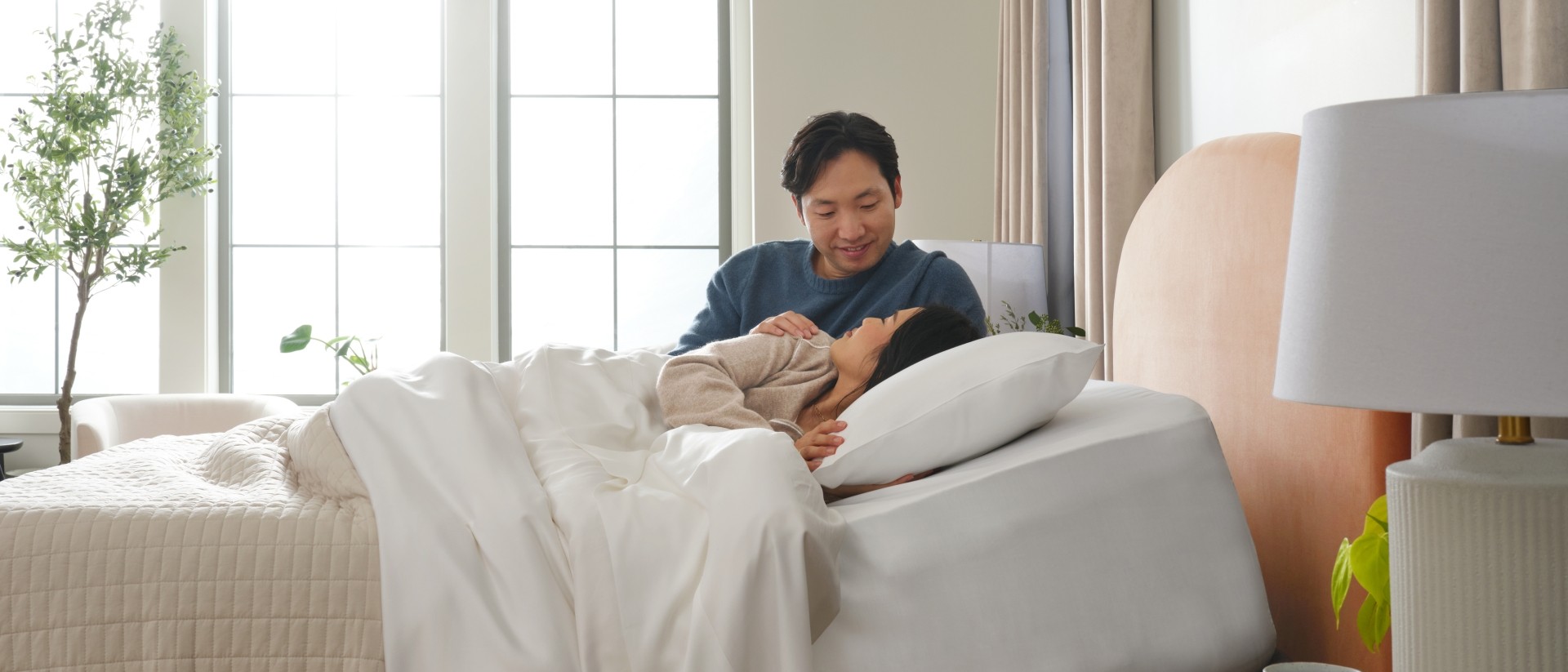
What's The Best Mattress for Sleep Apnea (CPAP)?
Do you wake up from a night of sleep feeling like you’ve pulled an all-nighter? With over 200,000 cases of sleep apnea diagnosed annually in the US. this common condition can lead to serious health problems.
Sleep apnea is caused by blocked airways, resulting in loud snoring and choking during sleep. Cases range in severity, from a few times to hundreds of occurrences a night. Those with sleep apnea lose roughly a third night’s sleep every night and their tossing and turning often affects their partners. Such a high amount of sleep debt can result in daytime fatigue and drowsiness, headaches, high blood pressure, weight gain, and eventually heart disease.
The most common treatment for sleep apnea patients is the CPAP or Continuous Positive Airway Pressure machine. This popular therapy for sleep apnea uses a face mask and oxygen tank to increase airflow during sleep. It may take some time to adjust to the facemask and airflow, but it has been effective for those with sleep apnea. Another solution that is often overlooked is investing in the best mattress for sleep apnea.
Raised & Adjustable Bases
In addition to a CPAP machine, proper sleep support is also a helpful treatment for sleep apnea. Beds that help with sleep apnea support sleepers like any quality mattress. With pressure points in the hips and shoulders well supported, the best mattress for sleep apnea is an adjustable one.
Many doctors recommend that patients raise the heads of their beds or use pillows as a prop. By preventing blockage and letting gravity do the work, snoring and blockage from sleep apnea are reduced. By elevating the bed, air can easily pass through the airways and into the lungs. Although adjustable beds are not a cure, they can lessen symptoms of sleep apnea and help bring more restful sleep to patients.
Purple Adjustable Bases
A mattress under an adjustable base improves circulation by adjusting the height of various parts of your body. This gives you get better control of circulation and relieves the stress on your heart. With better blood flow through the night, you’ll notice a reduction in aches and pains. This technology also features massage and vibration settings. By propping your body up, you can also minimize heartburn and acid reflux.
Purple offers quality adjustable bases designed to help customers with sleep apnea. One of the best options is the Purple Sleep Genius™ Smart Base. It’s the best adjustable base for sufferers of sleep apnea. It not only allows the head to tilt up to relieve sleep apnea symptoms, it also uses scientifically-composed music and neurosensory algorithms to help you get to sleep faster, sleep deeper, and stay asleep longer.
If you are suffering from Sleep Apnea, talk to one of our Sleep consultants to see how we can help you get the sleep you need.
